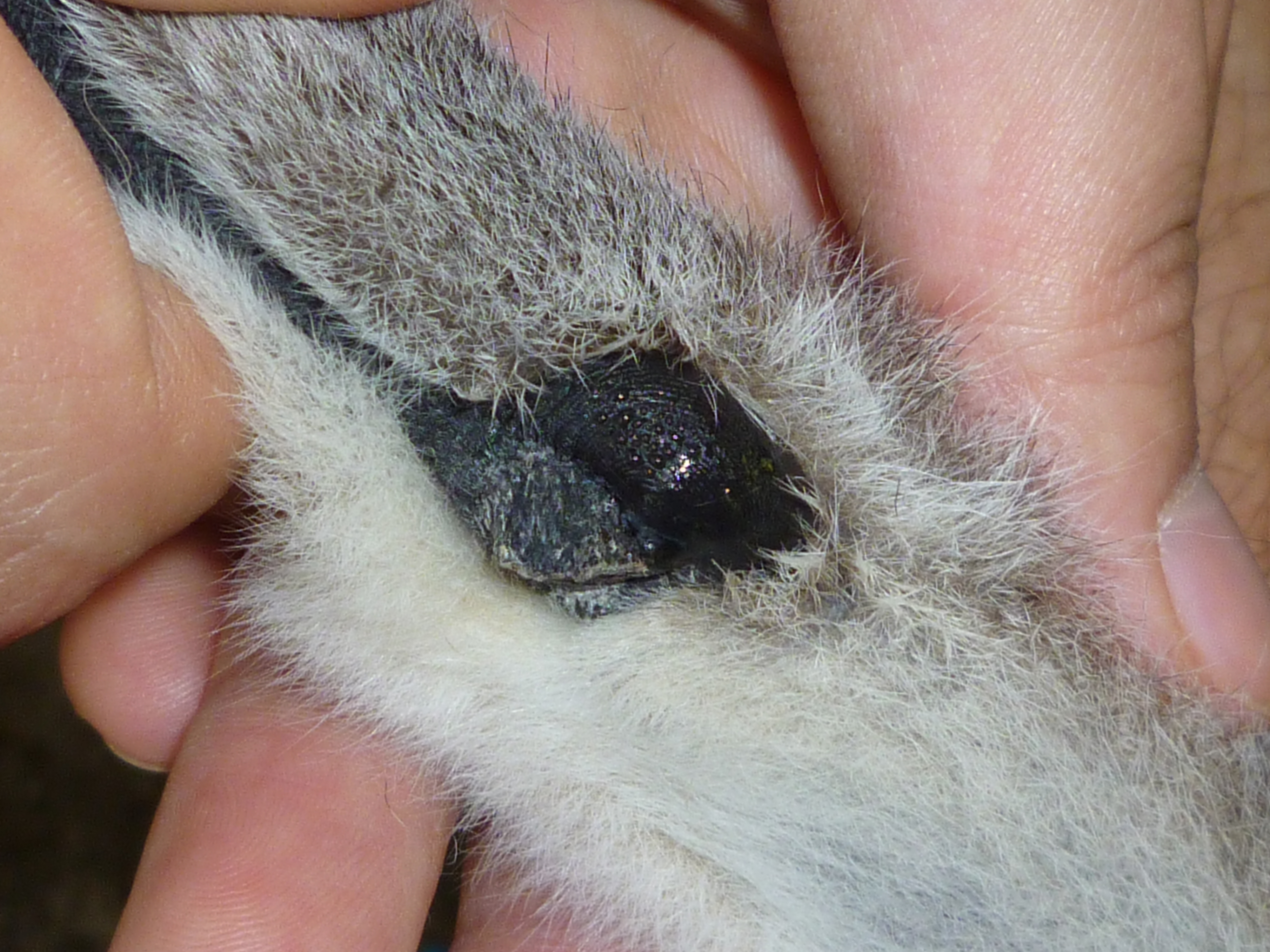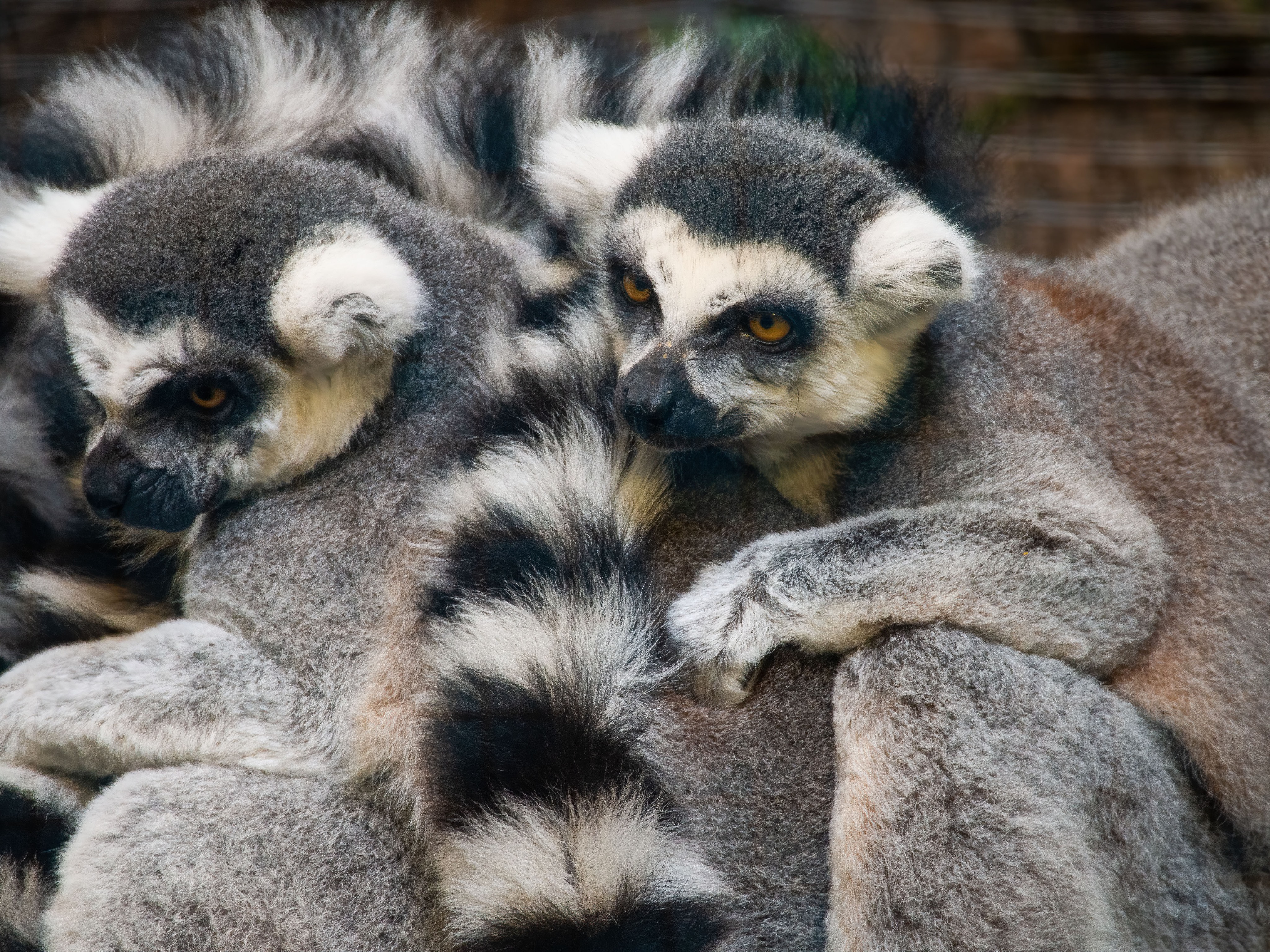Chemists are decoding the fruity scent of lemur stink flirting
New study identifies the molecules of a key lemur scent, but experts hesitate to call them pheromones
From the tip of a poofy tail, to the tip of a dog-like wet nose, ring-tailed lemurs can communicate in silence.
The lemurs — an endangered primate native to Madagascar — are known for a particularly acute sense of smell compared to other primates. Scent glands on their genitals, shoulders, and wrists let them communicate specific messages for fighting, climbing the social ladder, and flirting – or stink-flirting. In a new study published today in the journal Current Biology, chemists from the University of Tokyo have pinpointed the fruity, floral chemicals key to lemur love connections. Some may rush to declare this as the first discovery of primate pheromones, but experts are reluctant to agree.
During breeding season, a male ring-tailed lemur will slip his long tail in and out of his arms. As the tail slides through, it rubs against scent glands in his wrist. The male then wafts his tail toward a female, dispersing a diverse bouquet of smelly chemicals.

Male ring-tailed lemur showing antebrachial (wrist) glands
Japan Monkey Centre (CC BY)
Previous research has suggested that female lemurs are more receptive to males flirting this way than those not spreading scents. It’s not yet clear whether stink-flirting actually leads to more mating. But given the ring-tailed lemur’s reliance on smell, zoologists suggest that the animal may indeed communicate with sex pheromones.
Efforts to unravel the chemical secrets behind lemurs’ smell-based communication are nothing new. Groundbreaking research from Christine Drea at Duke University’s Department of Evolutionary Anthropology has reported chemical analyses for genital and shoulder scent glands for both sexes and across seasons, shaping our understanding of lemur behavior and social order. But unlike the greasy paste from shoulder glands, wrist glands produce small volumes of fast-evaporating clear liquid. Analyzing that volatile wrist cologne has been difficult, and decoding its contents was a long time in the making.
“About 10 years ago, one of the co-authors, [Isao] Munechika was actually kind of living with the lemurs at the [Primate Research] Institute,” says Kazushige Touhara, a Professor at the University of Tokyo and the study’s lead author.
According to Touhara, Munechika was puzzled by the lemur’s tail-wafting behavior. Touhara, an expert in the chemistry behind animal odors, stepped in with advanced methods in chemistry.
Over the course of seven years, the team painstakingly collected the tiny amounts of clear liquid from male lemur wrists. Each sample measured about 1/1000th of a tablespoon. “It takes time to collect samples,” Touhara said. “And to get the secretion from the wrist, you have to have a really good relationship with the animals.”

Male lemur antebrachial (wrist) gland
Kyoto University (CC BY)
Using a chemical analyzer tailored for volatile odors, the team succeeded in capturing the elusive volatile components found in male lemur wrists throughout each year. They learned that levels of three “fruity and floral” smelling chemicals spring up during breeding season. At least two of these molecules, tetradecanal and dodecanal, are known to affect sexual behavior in insects.
But are these chemicals actually important for lemur sexual behavior? Maybe. The new study's findings suggest that increased levels of testosterone lead to increases in these particular chemicals. And female lemurs may have a nose for them too. After the researchers added the three chemicals to a cotton pad, female lemurs seemed very interested — curiously sniffing the cotton pad more during the breeding season than non-breeding season.
Some may be tempted to hype the findings as the first time pheromones have ever been seen in primates. The word "pheromone" can carry a lot of weight. Pheromones may be useful for conservation of some insects, but applying that idea seems even more distant of a plan for lemurs endangered from habitat loss (deforestation). Scientists have pondered about the existence of human pheromones. But experts are reluctant to use that label. “I’m not saying that lemurs don’t have pheromones,” said Drea, who is unaffiliated with the study. “But I am saying that this paper is not demonstrating that they do.”
Defining a pheromone can be tricky and arbitrary. Drea, the Duke University anthropologist who studies mammals, likens it to “drawing a line in the sand.” Tristram Wyatt, a Senior Research Fellow of Zoology at the University of Oxford studies pheromones across the animal kingdom. Wyatt is also careful and methodical about the term.
“When you say something is a pheromone, there are a number of things that follow from that,” said Wyatt. “The problems come when we’re studying pheromones in new species — particularly in mammals.” With most mammals, there is a lot we don’t know about the sender’s odor and the receiver’s nose and behavior.
Asked whether this study’s results could be the first recorded primate pheromones, Wyatt was cautiously optimistic. “These are really promising candidates, and we’ve not had those before,” Wyatt said, “But what we don’t know at this stage, is that it actually affects anything to do with sex.”

Family of ring-tailed lemurs
Daniel C. Devor (CC BY)
Touhara seemed to agree. “We don’t know what happens after the female is interested in this odor,” he said. “So we have to really show that this enhances mating to be able to say that this is definitely a pheromone.”
Actually getting that evidence with ring-tailed lemurs means that future research should go beyond testosterone injections and female sniff tests. According to Drea, controlling lemur testosterone levels (up or down) is an established research practice, but long-term hormonal manipulation would require an implant. On the female side of things, prolonged sniffing during breeding season may seem like sexual attraction, but it doesn’t prove it. Researchers need to show that this fruity mixture of molecules specifically leads to more mating.
In humans, that sort of chemical communication is unlikely. Touhara doesn’t believe human sex pheromones exist, despite the fact that the human sense of smell is better than previously thought.
Using his own nose, though, Touhara smelled the lemur wrist secretion for himself. “Pretty good, actually,” he said, laughing. “This was kind of one of the surprising results.”
Similar signaling chemicals from mice are “stinky,” but Touhara was pleased to find the lemur’s scent to smell “like pears.” These anecdotes may not prove any science about the lemurs, but they add to a colorful history of humans making sense of the sights and smells around us.
Wyatt shared the story of French entomologist, Jean-Henri Fabre. In the 19th century, Fabre noticed male moths would fly long distances to find females. But that attraction seemed to fall apart when the female moths sat in a sealed glass container.
“And [Fabre] almost nailed it, that it must be an invisible chemical signal — it must be smell,” said Wyatt, tickled by the twist to come. “And then he makes the mistake of sniffing the female, and he can’t smell anything. So he says, ‘Well it can’t be the sense of smell’...And that set back pheromone research about a hundred years.”

